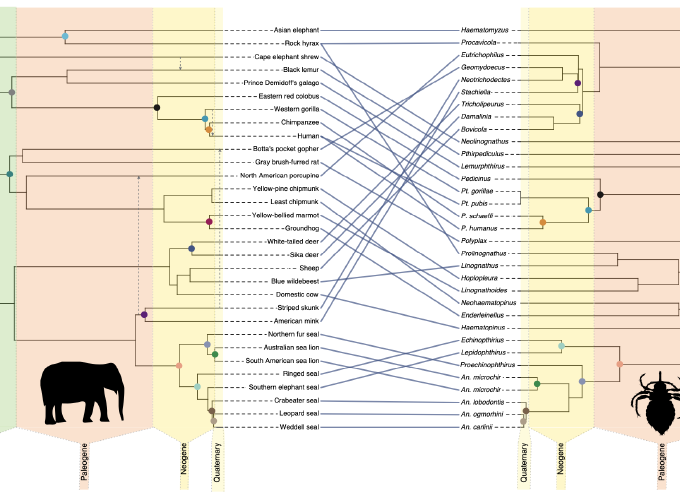Abstract
Mammals host a wide diversity of parasites. Lice, comprising more than 5,000 species, are one group of ectoparasites whose major lineages have a somewhat patchwork distribution across the major groups of mammals. Here we explored patterns in the diversification of mammalian lice by reconstructing a higher-level phylogeny of these lice, leveraging whole genome sequence reads to assemble single-copy orthologue genes across the genome. The evolutionary tree of lice indicated that three of the major lineages of placental mammal lice had a single common ancestor. Comparisons of this parasite phylogeny with that for their mammalian hosts indicated that the common ancestor of elephants, elephant shrews and hyraxes (that is, Afrotheria) was the ancestral host of this group of lice. Other groups of placental mammals obtained their lice via host-switching out of these Afrotherian ancestors. In addition, reconstructions of the ancestral host group (bird versus mammal) for all parasitic lice sup- ported an avian ancestral host, indicating that the ancestor of Afrotheria acquired these parasites via host-switching from an ancient avian host. These results shed new light on the long-standing question of why the major groups of parasitic lice are not uniformly distributed across mammals and reveal the origins of mammalian lice.
